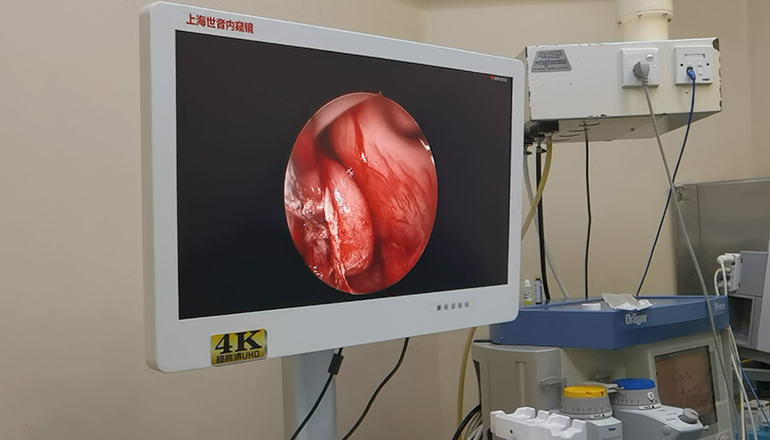- Shanghai, China
- [email protected]
- +86-21-58189111
Endoscopic surgery in ENT requires specialized equipment to provide the surgeon with a clear and detailed view of the internal structures of the head and neck. Here are some of the essential equipment used in ENT endoscopic surgery:
Endoscope: An endoscope is a thin, flexible tube with a camera and light source at the end. It is inserted through a natural opening such as the nose, mouth, or ear canal and allows the surgeon to visualize the internal structures on a monitor.
Light source: A high-intensity light source is necessary to illuminate the area being examined or operated on. The light source can be attached to the endoscope or located separately.
Camera: The endoscope is fitted with a camera that captures the images of the internal structures and sends them to a monitor. The camera must be high resolution and capable of capturing clear, detailed images.
Monitor: A high-resolution monitor is necessary to display the images captured by the endoscope. The monitor should be large enough for the surgeon and operating team to view the images clearly.

Insufflator: An insufflator is used to inflate the area being examined or operated on, such as the sinuses or middle ear. This creates more space for the endoscope and allows the surgeon to see the internal structures more clearly.
Suction system: A suction system is necessary to remove blood, mucus, or other fluids from the area being examined or operated on. This improves visibility and allows the surgeon to perform procedures more safely and efficiently.
Instruments: Specialized instruments such as forceps, scissors, and graspers are used to perform procedures during endoscopic surgery. These instruments are designed to fit through the narrow endoscope and allow the surgeon to manipulate tissue with precision.
Anesthesia equipment: Endoscopic surgery in ENT may be performed under local or general anesthesia, depending on the procedure and patient's medical condition. Anesthesia equipment such as a ventilator, anesthesia machine, and monitoring devices are necessary to ensure the patient's safety during the procedure.
Overall, endoscopic surgery in ENT requires specialized equipment that provides a clear and detailed view of the internal structures while minimizing trauma to the surrounding tissue. The equipment used in ENT endoscopic surgery is designed to improve patient outcomes by reducing the risks associated with traditional surgery, such as pain, scarring, and recovery time.
Leave a Comments